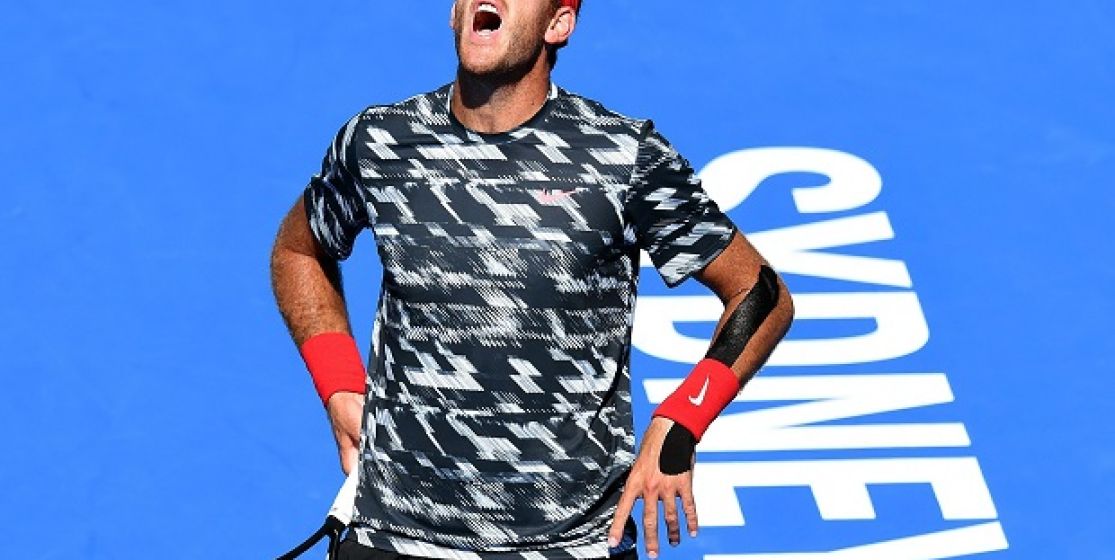Away from the courts most of the 2014 season following a wrist surgery, Juan Martin Del Potro is dreaming of coming back to the highest level. In light of the history of tennis, is this goal attainable?
When he won the US Open in 2009, dominating Master Federer in final, Juan Martin Del Potro was not even 21 and had his whole life in front of him. At the time, it was obvious: the Argentine was at the dawn of a great career and other major tournaments will inevitably fill his record. He should have had tickled Federer, Djokovic, Nadal or Murray. Or could have, without those damn fragile wrists, which will hinder his progression the following seasons and force him to go under the knife twice, in 2010 and again last year, forcing him this time to leave the courts for almost a year. Del Potro is now almost 27 and must start over or almost, with an ATP ranking beyond the top 500. Nevertheless, he firmly believes in a comeback and still has the talent to achieve a successful return to the highest level, as he showed intermittently during the few matches he played since the beginning of the year. Is it still possible to see the "Del Po" of 2009 and 2010, who had climbed up to fourth place in the world? If it is difficult to know, but we can find some answers in similar cases, numerous in tennis history, only by going back on the last few decades.
They managed a successful return
The example that comes up most often in the case of successful returns to top level after big physical problem, it is that of Thomas Muster. In 1989, the Austrian was hit by a car and seriously injured his knee. Everybody believed that the promising 21year-old career was over, but Muster returned to competition a few months later, even stronger than before. He became "Musterminator" a machine to crush his opponents and to win titles, including the most prestigious, the French Open in 1995. Among other examples, we should also remember that in the same year, in 1995, Michael Stich suffered a horrific ankle injury, in a match against Woodbridge in Vienna. An injury that certainly slowed down the career of the German but didn’t prevented him from making a nice comeback the following year when he reached the final of Roland Garros...
Also worth remembering the successful comebacks of Mark Philippoussis, twice finalist in Grand Slam tournaments five years apart, at the US Open in 1998 and at Wimbledon in 2003, with three knee surgeries between the two performances. How about too the unexpected victory of Goran Ivanisevic at Wimbledon in 2001, three years after his last title on the tour and when everyone thought that the Croatian was definitely out with a messy shoulder... Remember also that the career of Jo-Wilfried Tsonga has been marred by physical problems, which didn’t prevent him later to become one of the best. Finally, we must emphasize the phenomenal ability of Rafael Nadal to come back each time to the highest level despite numerous injuries (especially back), adapting his game to compensate and to keep winning, especially in his ochre garden of Roland Garros.
They never recovered
The cases of champions who have failed to regain their pre injury levels are also, unfortunately, numerous. Without necessarily going back to the Pat Cash case in the 80s, the great talents struck down by the comings and goings in the infirmary are plentiful the following two decades. There was for example Marcelo Rios, who could have had a better career than the one he had without a fragile physique. Disappointment too for Magnus Norman, Lleyton Hewitt, Marat Safin and the French, like Escudé, Di Pasquale, Golmard and more recently Paul-Henri Mathieu, for whom the quest for a hypothetical return to the top is as beautiful than vain. Swedish tennis also suffered, with Thomas Johansson, a brilliant career abruptly stopped in 2003 because of knee problems and his namesake Joachim Johansson, who also had to prematurely leave the tour in 2008 at not even 26 years old, three years after having entered the world top 10 after multiple injuries... Case substantially similar and more famous: Gustavo Kuerten, who has never been able to recover from serious hips problems. They also forced him into early retirement, at not even 30 years old...
Reasons to be hopeful
By sticking to simple count of the injured who have successfully managed a comeback and those who could never really recovered, there is nothing to be optimistic about for Del Potro. History seems to show that it is possible to return to the highest level after one serious injury (e.g. Muster and Stich), but physical problems that accumulate as with Del Potro, end up wearing the body but also the-mind... In the end, the Argentine needs to keep hope and can find inspiration in two players currently on the tour. The first is called Tommy Haas, who came back strong and late in his career at a great level, despite many forced removals in the past. The case of the German veteran is encouraging because it shows that it’s never too late to shine. For Del Potro who is 26, it's rather good news...
The other source of inspiration is called Rafael Nadal. The Spanish player is the proof that with a mind of steel, you can make up for an uncooperative body. He’s also the proof of medical progress in recent years. Some injuries, which were fatal a few years ago, are not necessarily today. Besides, Andy Murray also managed to last among the world's best while he also had to deal with a number of injuries. Now, time for Del Potro to learn from these examples and keep faith in himself. And his wrists!






